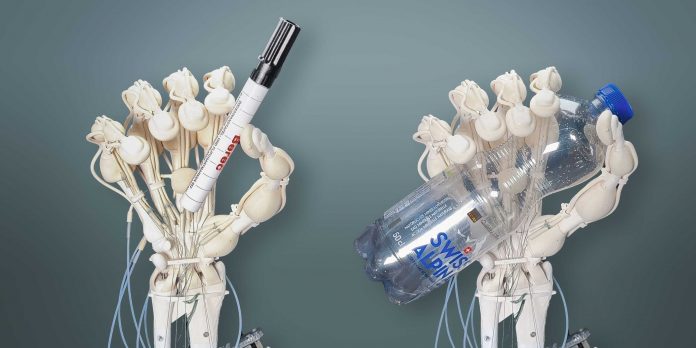The rapid advancement of 3D printing technology has led to a significant expansion in available materials
Initially confined to fast-curing plastics, the technology has now been adapted for using slow-curing plastics. These materials offer distinct advantages, boasting improved elastic properties and greater durability and robustness.
Innovative printing technology
The application of these polymers is facilitated by an innovative technology developed by a collaboration between researchers at ETH Zurich and a US-based start-up.
The capability to 3D print intricate and highly durable robots using a range of premium materials in a single process has been achieved. This technology also simplifies the integration of soft, elastic, and rigid materials, allowing researchers to craft intricate structures and components with desired cavities.
ETH Zurich researchers
Employing the technology, researchers at ETH Zurich have achieved a groundbreaking milestone by successfully 3D printing a robotic hand that simultaneously incorporates bones, ligaments, and tendons composed of various polymers.
“We wouldn’t have been able to make this hand with the fast-curing polyacrylates we’ve been using in 3D printing so far,” explains Thomas Buchner, a doctoral student in the group of ETH Zurich robotics professor Robert Katzschmann and first author of the study.
“We’re now using slow-curing thiolene polymers. These have very good elastic properties and return to their original state much faster after bending than polyacrylates.” Thiolene polymers are well-suited for crafting the elastic ligaments of the robotic hand.
Revolutionising 3D Printing
Traditional 3D printers follow a layer-by-layer production process, where nozzles deposit a viscous material at specific points, and a UV lamp promptly cures each layer. Earlier approaches used a device to scrape off surface irregularities after each curing step, but this method was limited to fast-curing polyacrylates.
Slow-curing polymers like thiolenes and epoxies proved problematic as they would cause the scraper to become clogged.
To accommodate slow-curing polymers, the researchers developed 3D printing further by adding a 3D laser scanner that immediately checks each printed layer for surface irregularities.
“A feedback mechanism compensates for these irregularities when printing the next layer by calculating any necessary adjustments to the amount of material to be printed in real time and with pinpoint accuracy,” explains Wojciech Matusik, a professor at the Massachusetts Institute of Technology (MIT) in the US and co-author of the stud











